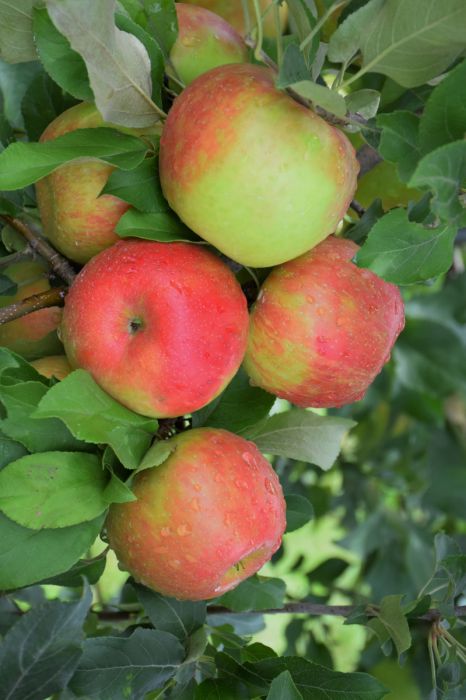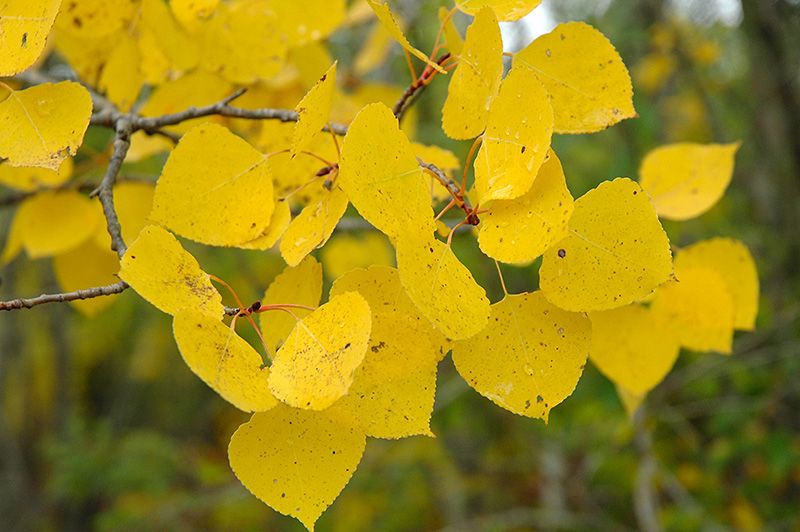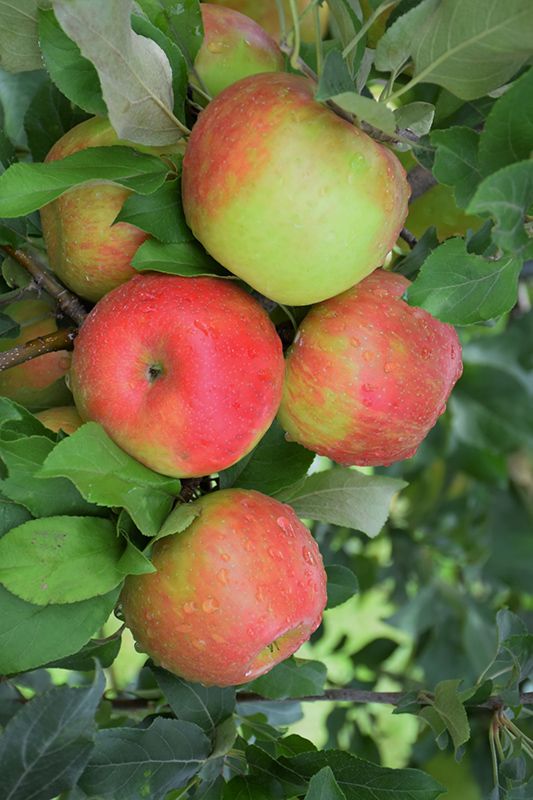Malus, Fruiting Apple 'Honeycrisp' (Large)


- Sun Preference
- Full-Sun
- Bloom or Harvest Time
- September, October
As low as $229.00
Description
Super crisp, juicy, and flavorful. Excellent keeper. Ready in late September. Good disease resistance. University of Minnesota introduction. Mid season bloom.
Minnesota's Largest Selection of Trees
At Minnesota's Destination Garden Center, we offer a diverse range of trees to suit any landscaping need. Whether you're looking for shade trees to cool your home or ornamental trees to add beauty and interest, you'll find the perfect tree at Gertens. Our knowledgeable staff can help you select the right tree for your space and provide tips for care and maintenance. Visit Gertens today and explore the unmatched variety of trees to enhance your outdoor environment!
Details
Honeycrisp Apple | Malus 'Honeycrisp'
Height: 15 feet
Spread: 15 feet
Sunlight: Full Sun
Hardiness Zone: 4a
Brand: Gertens
Description:
An exceedingly crisp hardy red apple with a sweet and juicy flavor, keeps extremely well; eating apples are high maintenance and need a second pollinator; the perfect combination of accent and fruit tree, needs well-drained soil and full sun
Edible Qualities
Honeycrisp Apple is a small tree that is typically grown for its edible qualities. It produces large red round apples (which are botanically known as 'pomes') with creamy white flesh which are usually ready for picking from early to mid fall. The apples have a sweet taste and a crisp texture.
The apples are most often used in the following ways:
- Fresh Eating
- Cooking
Features & Attributes
Honeycrisp Apple features showy clusters of lightly-scented white flowers with shell pink overtones along the branches in mid spring, which emerge from distinctive pink flower buds. It has forest green deciduous foliage. The pointy leaves turn yellow in fall. The fruits are showy red apples carried in abundance in early fall. The fruit can be messy if allowed to drop on the lawn or walkways, and may require occasional clean-up.
This is a deciduous tree with a more or less rounded form. Its average texture blends into the landscape, but can be balanced by one or two finer or coarser trees or shrubs for an effective composition. This is a high maintenance plant that will require regular care and upkeep, and is best pruned in late winter once the threat of extreme cold has passed. Gardeners should be aware of the following characteristic(s) that may warrant special consideration;
- Messy
- Disease
Aside from its primary use as an edible, Honeycrisp Apple is sutiable for the following landscape applications;
- Accent
- Shade
- Orchard/Edible Landscaping
Planting & Growing
Honeycrisp Apple will grow to be about 15 feet tall at maturity, with a spread of 15 feet. It has a low canopy with a typical clearance of 4 feet from the ground, and is suitable for planting under power lines. It grows at a medium rate, and under ideal conditions can be expected to live for 50 years or more. This variety requires a different selection of the same species growing nearby in order to set fruit.
This tree is typically grown in a designated area of the yard because of its mature size and spread. It should only be grown in full sunlight. It prefers to grow in average to moist conditions, and shouldn't be allowed to dry out. It is not particular as to soil type or pH. It is highly tolerant of urban pollution and will even thrive in inner city environments. This particular variety is an interspecific hybrid.
More Information
| Available for Pre-Order | No |
|---|---|
| Bloom or Harvest Time | September, October |
| Tree Type | Fruit |
| Sun Preference | Full-Sun |
| USDA Hardiness Zone | 4, 5, 6, 7 |
| Common Family Name | Apple |


